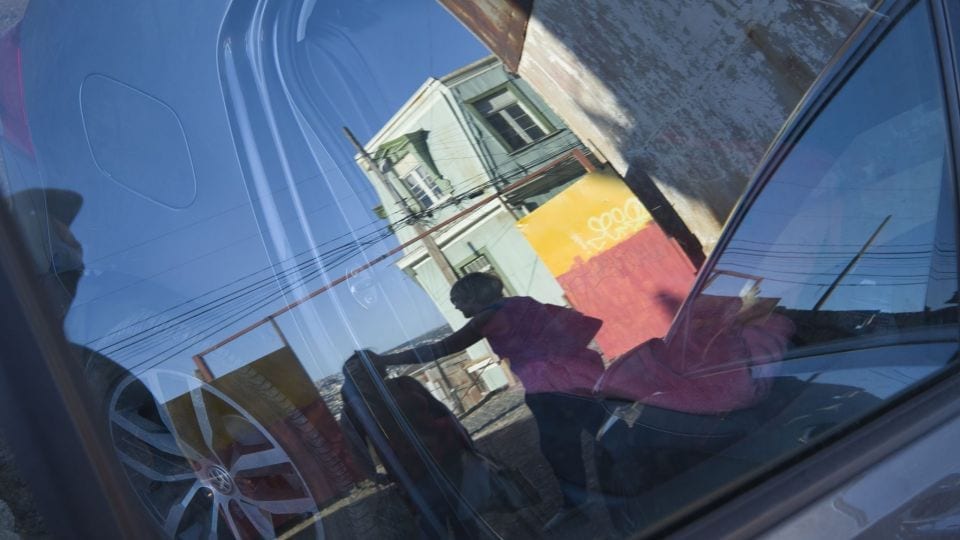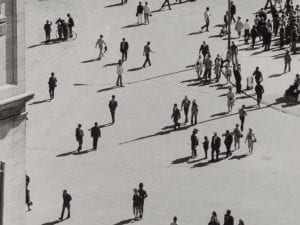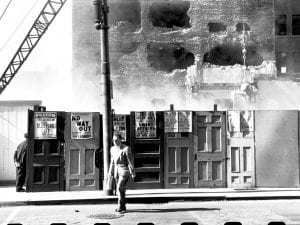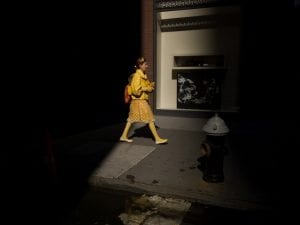In celebration of its 70th anniversary, Magnum Retold, in collaboration with Olympus UK, asks contemporary photographers Olivia Arthur (b. 1980), Thomas Dworzak (b. 1972), Thomas Hoepker (b. 1936) and Moises Saman (b. 1974) to respond to iconic documentary series from the agency’s archives. Francesca Sears, Content Director of Magnum Photos and Project Manager of the exhibition, reflects on the show and its important contribution to current dialogues.
A: The exhibition takes its inspiration from the work of early practitioners. How does Magnum’s archival imagery continue to resonate with audiences?
FS: Magnum’s archive, with images dating from the 1920s, chronicles many of the most significant events in 20th century world history. Photographs from the founders in 1947 through to the present day document both global issues and personal stories that speak to contemporary life and humanist values and are as relevant today as 70 years ago.
A: What was it about the practice of Arthur, Dworzak, Hoepker and Saman that made them ideal choices for this show?
FS: The beauty of having these four stories together in the exhibition was in combining their diversity of approach, photographic styles and subject matter. A very personal story is captured by Saman, as he makes the final journey of Werner Bischof, who met his tragic end in a car accident high in the Andes of Peru. Accompanied by Bischof’s filmmaker son Marco, Saman retraces his final steps, evoking a search for his own Peruvian roots and for a sense of solace and understanding for Marco.
Arthur, inspired by David Seymour’s Children of Europe – a sensitive portrayal of the plight and struggles of children in post Second World War Europe – chose to make a series of portraits of refugee children seeking safety and a new life in Britain today. This gentle set of intimate images shares the humanist qualities espoused by Seymour, both gaining the trust and confidence of those they photographed.
Hoepker, as with many Magnum photographers, cherishes and admires the work of Sergio Larrain, in particular the poetic series he shot in Valpariaso, Chile. Hoepker’s images are an ode to this beautiful rendering of a fascinating and colourful place.
A: Dworzak’s images are particularly striking. How does his work create dialogues with Robert Capa’s practice?
FS: Dworzak’s work takes the viewer on a six-week journey through Russia, Ukraine and Georgia, following in the footsteps of Capa’s 1947 trip with American novelist John Steinbeck. Although he has shot in his usual documentary style, he has chosen to turn his gaze to the “official version” of each country as they presented themselves to the outside world. Dworzak writes: “I chose the rehearsal over the ‘action.’ The museum over the real place. The reenactors over the real people. The fake over the ‘true.’”
A: Each project is influenced by the work of another artist. How do these new works enhance or alter the meaning of their source materials?
FS: It varies per story. With Dworzak’s A Russian Journal Retold we can sense that the narrative to explain the Soviet Union or the Former Soviet Union is being “shown” to each of the photographers. Capa was literally taken to see what the authorities wanted him to see, whilst Dworzak has chosen deliberately to document the official outward signs of national pride and heritage.
In the case of Saman’s Peruvian story, the contemporary series reveals the corrosive and detrimental impact to the landscape – and to local societies – brought by seemingly rapacious mining companies since the original trip in 1957. Gone are the idealistic images of an indigenous boy playing his flute in an untouched and untainted landscape.
A: What universal themes does the exhibition uncover?
FS: Despite the work spanning 70 years, viewers will see and experience the universal themes of human resilience, dignity, the centrality and power of political imagery to national identity and every man’s quest for answers to the unknown.
A: What are your personal highlights?
FS: I particularly enjoyed being taken on what felt like a spiritual journey into the Andes, partly enhanced by the unique hang of the images.
A: Can you tell us about the projects Magnum has on the horizon for 2018?
FS: A couple of projects for 2018 will include extending our coverage of the ongoing refugee crisis as more people find themselves displaced around world. We will continue to document the US during this turbulent time in its history, and we will have a seminal book coming out with Thames and Hudson exploring Magnum photographers’ work in China from 1938 to the present day.
At Art Bermondsey Project Space, London, until 9 December. Find out more: www.magnumphotos.com.
Credits:
1. Thomas Hoepker, CHILE. Valparaiso. 2017. Barrio Artilleria. © Thomas Hoepker/Magnum Photos





